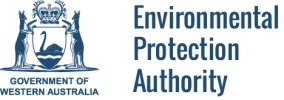The Environmental Protection Authority has recommended the State Government consider developing a long term plan to protect the environmental values of the Pilbara in the face of growing development pressures.
EPA Chairman Paul Vogel said the Pilbara was widely recognised as an important mining province, but it also had a wealth of biodiversity and other environmental values.
“The Pilbara region features a diverse range of terrestrial, aquatic and marine landscapes, numerous flora and fauna species, nationally listed wetlands and unique ecological features,” Dr Vogel said.
“However, the Pilbara is also one of Australia’s development hotspots, with the region producing more than 90 per cent of Australia’s iron ore and about 95 per cent of the State’s iron ore in 2011. The region also accounted for 80 per cent of the State’s entire production value from minerals and petroleum in 2012.
“Given the biodiversity values, economic importance, and rate of development in the region, the EPA believes it is timely to develop further strategies to ensure the important values of the region are protected. The Government’s successful Kimberley Science and Conservation strategy provides a model for how this can be achieved.”
The EPA’s strategic advice on the “Cumulative environmental impacts of development in the Pilbara region” to the Minister for Environment includes 11 recommendations to assist in providing a pathway to more sustainable development.
“We believe the strategies recommended in this advice are practical, timely, and build on existing Government initiatives to provide better long term outcomes for the Pilbara region as a whole,” Dr Vogel said.
Dr Vogel said the advice focused on the importance of rehabilitation, knowledge sharing and strategic implementation of offset funds to ensure landscape scale restoration and biodiversity protection.
A key recommendation is that a whole-of-Government strategic plan for biodiversity conservation in the Pilbara that takes into account biodiversity conservation goals, targets, and strategies be developed, Dr Vogel said.
Other recommendations include:
- the development of a central register to make information on clearing and rehabilitation activities in Western Australia publicly available;
- a specific proposal be developed to trial the proposed State Environmental Data Library in the Pilbara region;
- greater investment and a coordinated approach to research and knowledge sharing on rehabilitation of Pilbara landscapes;
- a high level group comprising of industry, research organisations and government agencies is convened to establish objectives for rehabilitation and mine closure;
- a collaborative research program is established to improve the understanding of the impacts of mine pit lakes; and
- a comprehensive inventory of current and potential mine pit lakes across the Pilbara be prepared and maintained by Government.
Dr Vogel said with only six per cent of the Pilbara biogeographic region held in the formal reserve system, the EPA also identified an opportunity to increase the formal reserve system to enhance the long term protection of biodiversity in the region.
The advice also recommends the Government, in consultation with industry, investigate a strategic, coordinated approach to environmental offsets in the Pilbara via a strategic conservation initiative.
The EPA’s strategic advice to the Minister for Environment is available at www.epa.wa.gov.au
Media contact: Nadia Miraudo 0400 866 450
